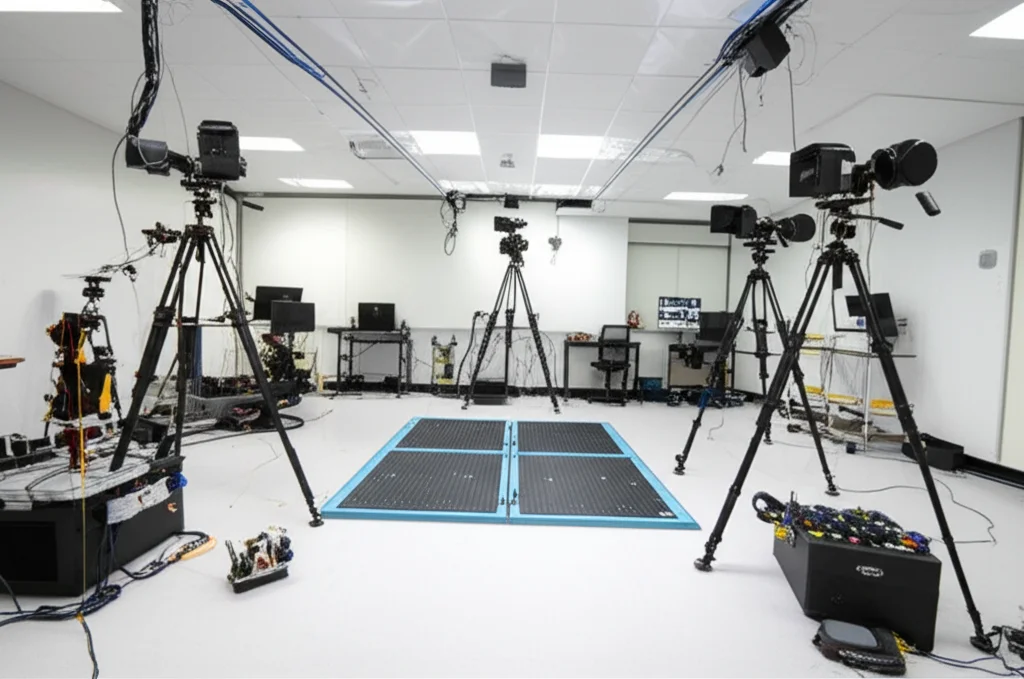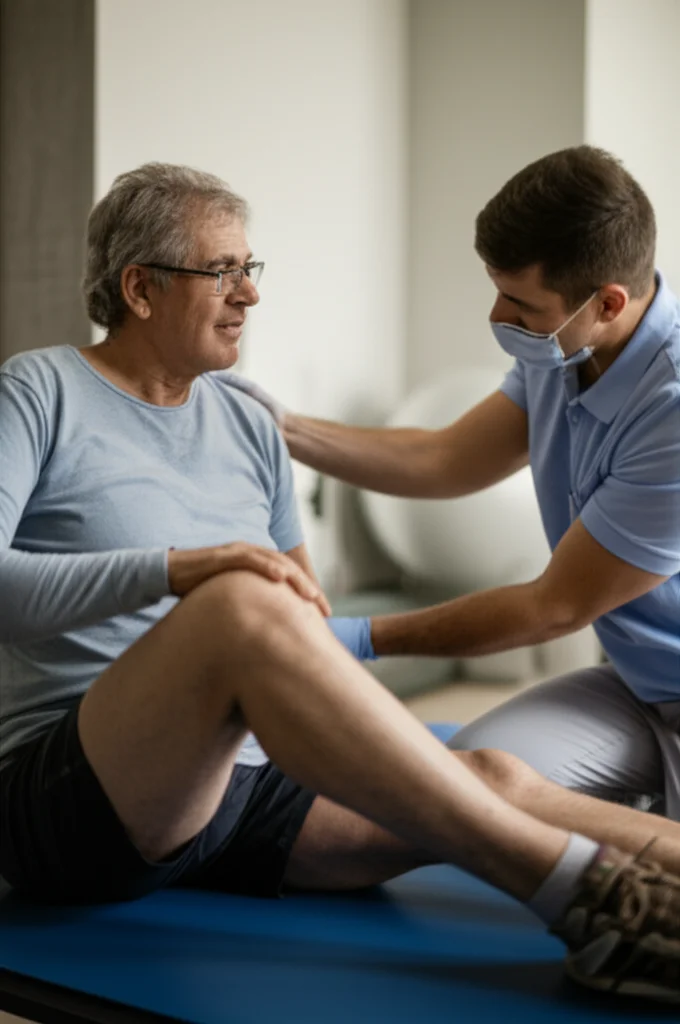Walking the Walk: Early Gait After Unicompartmental Knee Surgery
Hey There, Let’s Talk Knees!
So, you know how sometimes just one part of your knee is giving you trouble? Like, maybe the inner side is worn out but the rest is doing okay? That’s where something called Unicompartmental Knee Arthroplasty, or UKA for short, comes in. Think of it as a partial knee replacement. It’s pretty neat because it targets just the damaged bit, leaving the healthy parts – especially those crucial ligaments – intact. This often means a smaller cut, less blood loss, and a quicker bounce-back compared to a full knee replacement.
Now, UKA has become super popular, especially with more folks living longer and wanting to stay active. It’s often seen as a sweet spot for treating knee osteoarthritis before things get too widespread. But here’s the thing: while we know UKA works well overall, getting a real, objective handle on how people are *actually* walking and balancing right after the surgery has been a bit fuzzy.
Traditionally, we’ve relied a lot on what patients tell us about their pain and function, or maybe checked X-rays. But let’s be honest, how you feel can change day-to-day based on mood, the weather, you name it! We needed something more solid, something quantitative.
Why Gait Analysis is Our New Best Friend
That’s where gait analysis steps in (pun intended!). It’s a fancy way of saying we use technology to measure exactly how you walk and stand. It gives us hard numbers on things like your speed, how long your steps are, how steady you are, and so much more. It’s like having a super-detailed report card for your movement.
We’ve used gait analysis to compare full vs. partial knee replacements, or to see how people walk before and after a full replacement. But getting down to the nitty-gritty of those *early* days and weeks after a UKA? That hasn’t been explored as much.
So, what we wanted to do with this study was get a clear picture, using quantitative gait analysis, of what happens to walking and stability in the first few months after UKA. We compared patients getting the surgery to a group of healthy folks around the same age. The goal? To really understand the recovery journey and figure out the best ways to help people get back on their feet.
Putting the Study Together
We gathered a group of 30 patients who had UKA on one knee because of osteoarthritis. We made sure they didn’t have other joint problems messing up their walk, had no complications after surgery, and could walk on their own by the time we did our checks. We also had a control group of 15 healthy older adults without any history of hip or knee issues.
Everyone gave their okay to be part of the study. The surgeries were all done by the same team, following standard procedures, using a specific type of mobile-bearing prosthesis.
After surgery, everyone followed a standard rehab plan. This included:
- Starting gentle exercises right away (like flexing the quad muscle and moving the knee).
- Getting up and walking with help within a couple of days.
- Working towards walking without help around two weeks post-op.
We measured things at three points for the UKA group: before surgery, at 1 month post-op, and at 3 months post-op. For the healthy group, we just measured once. We used some serious tech for the gait and stability checks – motion capture cameras, pressure plates, the works! We measured things like:
- HSS scores: This is a common score that includes pain, function, and overall well-being.
- Gait parameters: Speed, stride length (how far apart your steps are), step frequency (how many steps you take per minute), gait cycle (one full step with both legs), and single support time (how long you spend standing on one leg).
- Stability metrics: We looked at the Center of Pressure (COP) – basically, where your weight is distributed on your foot – and how much that point moves around while you’re standing still. More movement means less stability.

We crunched the numbers to see how the UKA group changed over time and how they compared to the healthy group.
What We Found: The Ups and Downs of Early Recovery
First off, the UKA and healthy groups were pretty similar in age, sex, and BMI, which is good – means we’re comparing apples to apples.
Looking at the UKA group over time, the HSS scores (remember, that’s pain and function) got way better at both 1 and 3 months compared to before surgery. This tells us people were feeling a lot better subjectively, which is fantastic and lines up with what we usually see.
Now, for the gait stuff:
- Speed, Stride Length, Gait Cycle, Single Support Time: These all showed significant improvement at 1 month post-op compared to before surgery, and even more improvement by 3 months. This is great news – people are walking faster and more efficiently relatively quickly!
- Step Frequency: This one was a bit stubborn. It didn’t really change much between before surgery and 1 month post-op. It *did* finally increase significantly by 3 months, but it was the slowest parameter to catch up.
But here’s a crucial point: while things improved for the UKA group, even at 3 months post-op, they still weren’t walking quite like the healthy control group. Their speed, stride length, step frequency, and single support time were still lower, and their gait cycle was longer.
And then there’s stability. This was perhaps the most surprising finding. At 1 month post-op, the stability metrics (the COP path length and ellipse area) actually got *worse* compared to before surgery! This suggests people were *less* steady in the very early recovery phase. By 3 months, stability *did* improve significantly compared to 1 month and baseline, but still wasn’t back to healthy levels.

Connecting the Dots: What Does This Mean?
So, what can we take away from all this? Well, the good news is that UKA definitely helps people feel better and walk better relatively quickly. The improvements in HSS scores and most gait parameters by 1 and 3 months are solid proof of that.
The lag in step frequency improvement might be due to lingering effects of chronic OA, like muscle weakness or just old habits. It takes a bit longer to regain that natural rhythm and pace.
The dip in stability at 1 month is a really important clinical implication. It means that even though patients might feel better and be walking more, they are actually at a higher risk of falls during this early period. Why? Probably a mix of things:
- Psychological factors: Fear of falling or re-injuring the knee can make people hesitant and less stable.
- Muscle weakness: The muscles around the knee need time to recover strength after surgery.
- Proprioception: Even though UKA preserves ligaments (which help with knowing where your body is in space), years of OA might have already messed with this sense.
Even at 3 months, stability and gait weren’t fully back to normal compared to healthy individuals. This tells us that recovery is ongoing and probably needs focused attention beyond the initial few months.

Putting Findings into Practice: Tailoring Rehab
These findings really highlight the need for a structured, phased rehabilitation program after UKA. It’s not just about getting the knee moving; it’s about rebuilding strength, confidence, and balance.
Here’s a rough idea of how rehab could be tailored based on what we saw:
- Early Phase (0-4 weeks): Focus heavily on managing pain and swelling. Get that basic knee movement back. Start gentle muscle activation. CRITICALLY, emphasize fall prevention strategies. Even though they might be walking, they are less stable.
- Mid Phase (4-12 weeks): This is when you really hit the muscle strengthening, especially the quads. Work on improving gait mechanics – maybe using visual cues or feedback to help with step length and frequency. Gradually increase weight-bearing exercises.
- Late Phase (Beyond 12 weeks): Continue strengthening. Add exercises specifically for balance and proprioception (like standing on unstable surfaces, if appropriate). Work on normalizing gait patterns and getting back to more complex activities like stairs or longer walks.
The key takeaway is that rehab should be personalized and adapt as the patient recovers. Using quantitative tools like gait analysis can help clinicians see exactly where someone is struggling (e.g., speed, stability) and adjust the program accordingly.
A Few Caveats
Like any study, this one had its limits. We only looked at the first 3 months – recovery definitely continues after that! We also didn’t dive into the specifics of knee joint movement itself (kinematics), which would add another layer of detail. Plus, we didn’t compare different types of UKA implants, which might have slight differences in how people recover. And, of course, a larger study with more patients would make the findings even stronger.
Wrapping It Up
So, there you have it. Early on after UKA, most gait parameters improve nicely, but step frequency lags a bit, and importantly, stability takes a temporary dip before improving. Even at 3 months, full normalization of gait and stability isn’t typically achieved compared to healthy individuals. This study really underscores the value of objective gait analysis to track recovery and the need for rehab programs that specifically address muscle strength, proprioception, and that early-phase stability challenge to help patients walk confidently and safely.
Source: Springer







